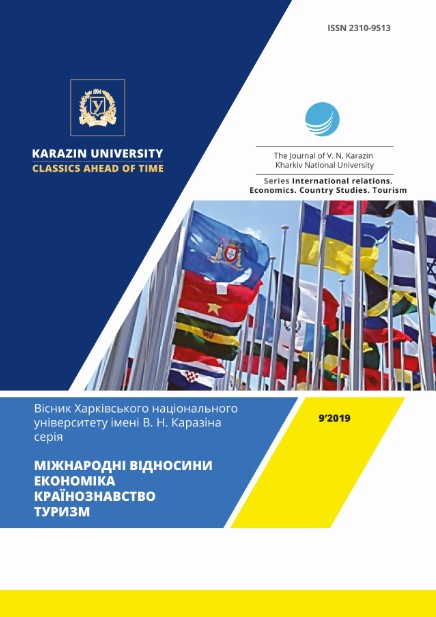Research of the system of relationship with contractors as an element of evaluation of the efficiency of the activity of the enterprise
Abstract
In the conditions of high level of instability and market uncertainty, it is necessary to continuously develop and improve mechanisms for increasing the stability, effective management of enterprises, and the formation of new ties. The increase of possible variants of interaction in the modern socio-economic environment requires the expansion of the methodological apparatus and tools for studying the relationship between contractors. The subject of research in the article is the applied aspects of evaluating the relationship management system with contractors of oil and gas enterprises. The purpose of the study is to summarize the theoretical and methodological principles, the development of methodological and practical recommendations for evaluating the system of interaction with contractors of oil and gas enterprises. The task: to describe the methodical approach to the formation of a system for managing relationships with counterparties of the enterprise. General scientific methods of modeling modeling, variation, integral calculus and economic analysis are used to study the system of relationships with counterparties of oil and gas enterprises; system approach and structural-logical analysis - to present the results. The following results were obtained: a universal method for assessing the satisfaction of counterparties and the system of interaction with them was developed, in which, unlike the existing ones, the modified 10-point Staple scale and the model of “discontinuities” were used as analysis tools. the level of their actual satisfaction establish the correspondence of the ratio between the indicators of "satisfaction", "expectation", determine the rating of the importance of indicators for consumers oil, and on its basis to set indicators to focus attention units of oil and gas enterprises in the total enterprise management system to achieve a common goal - to strengthen customer relationships and a corresponding increase in profits as a result of economic agreements with them. Conclusions: as a result of analyzing the gaps between the counterparties' expectations and the level of their actual satisfaction, it was found that the indicators for which satisfaction was rated highly have a high rating of importance for consumers, as well as certain indicators for which significance exceeds satisfaction and, therefore, needs improvement.
Downloads
References
Carter, R. (1995). The Seven Cs Effective Supplier Evaluation. Purchasing and Supply Chain Management.
Kano, Noriaki, Nobuhiku, Seraku, Fumio, Takahashi, & Shinichi, Tsuji. (1984). Attractive quality and must-be quality. Journal of the Japanese Society for Quality Control, 14.
Lamben, Zh.-Zh. (1996). Strategicheskiy marketing. Evropeyskaya perspektiva. SPb.: Nauka.
Zeitaml, V.A., Berry, L.L., & Parasuraman, A. (1988). Communication and Control Processes in the Delivery of Service Quality. Journal of Marketing, 52.
Parasuraman, A., Berry, L.L., Zeitaml, V.A. (1985).Conceptual Model of Service Quality and Its Implication for Future Research. Journal of Marketing, 49.
Predvoditeleva, M.D., Balaeva, O.N. (2005). Podhodyi k upravleniyu kachestvom uslug: fokus na potrebitele. Menedzhment v Rossii i za rubezhom, 2.
Mittal, B., Lassar, W.M. (1998). Why do customers switch? The dynamics of satisfaction versus loyalty. Journal of Services Marketing, 12.
Citations
Development of the Methodology for the Choice of Polygraphy Equipment for Printing on Cloth
Babenko Vitalina, Hrabovskyi Yevhen, Ivashura Andrii & Protasenko Olga (2020) WSEAS TRANSACTIONS ON ENVIRONMENT AND DEVELOPMENT
Crossref
Authors who publish with this journal agree to the following terms:
- Authors retain copyright and grant the journal right of first publication of this work under the terms of a license Creative Commons Attribution License 4.0 International (CC BY 4.0).
- Authors are able to enter into separate, additional contractual arrangements for the non-exclusive distribution of the journal's published version of the work (e.g., post it to an institutional repository or publish it in a book), with an acknowledgement of its initial publication in this journal.
- Authors are permitted and encouraged to post their work online (e.g., in institutional repositories or on their website) prior to and during the submission process, as it can lead to productive exchanges, as well as earlier and greater citation of published work.




